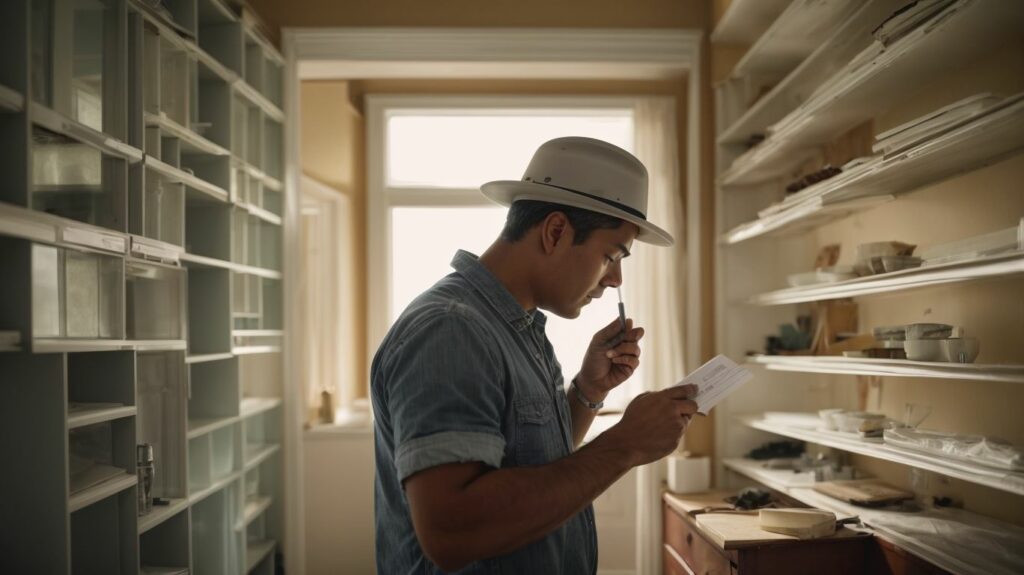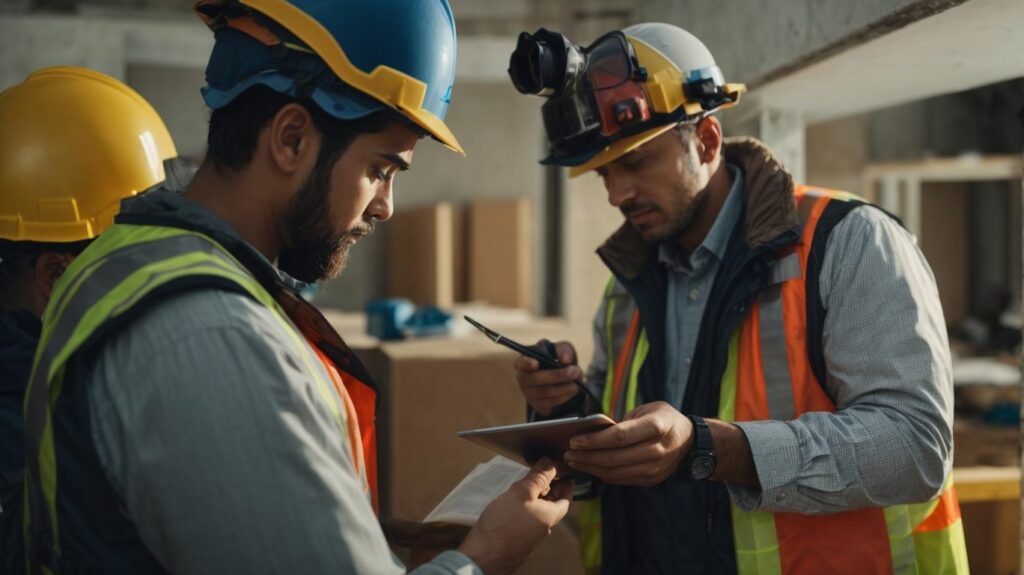20+ Years Experience
Specialist Property Inspections

Enquire Today For A Free No Obligation Quote
The property inspection process is a crucial step in buying or renting a property, as it provides valuable information about the property’s condition and potential issues. It is essential to be aware of the intricacies of this process to make informed decisions and ensure a smooth transaction.
1. Ensuring Property Condition: Property inspection allows prospective buyers or tenants to assess the overall condition of the property, including structural integrity, functionality of systems, and potential damages.
2. Evaluating Potential Issues: Through the inspection process, potential issues such as leaks, electrical problems, or pest infestation can be identified, enabling buyers or tenants to make informed decisions regarding the property’s suitability.
1. Reviewing Documentation: Before the inspection, it is crucial to review any available documentation related to the property, including maintenance records or previous inspection reports to gain insights into its history.
2. Making Necessary Arrangements: It is important to coordinate with the property owner or real estate agent to schedule the inspection at a convenient time. Ensure that access to the property is granted for a thorough assessment.
In the following sections, we will provide a step-by-step walkthrough of the property inspection process, guiding you on what to expect and what aspects to focus on during each stage of the inspection. we will discuss how to accurately document the inspection findings, interpret the results, and plan for any necessary repairs or maintenance after the inspection.
Understanding the Property Inspection Process is essential when buying or selling a property. The following steps are involved:
Fact: In 2020, a survey revealed that 84% of homebuyers consider a property inspection to be a crucial part of the purchasing process.
Property inspection is crucial in real estate matters. It is important to prioritize property inspection to ensure that your investment aligns with your expectations. In this section, we will discuss the importance of assessing the property’s condition and identifying any potential issues that could impact the value of your investment and your peace of mind. Let’s explore the world of property inspection and understand why it is a vital step in the real estate process.
Ensuring the condition of a property is crucial in property management and for maintaining a competitive edge in the rental market. Here is a step-by-step guide on how to ensure the condition of a property:
Evaluating potential issues during a property inspection is crucial to ensure the condition of the property and identify any possible problems. A thorough inspection involves examining various aspects, such as the exterior, interior, structure, and systems of the property. The inspection findings should be meticulously documented, including clear and detailed notes and photographs or videos. This enables the property management company or homeowner to interpret and report the results accurately. Identifying deficiencies, categorising concerns, and making recommendations are key steps in evaluating potential issues. Prompt communication of the findings with stakeholders helps in planning for necessary repairs or maintenance.
Evaluating potential issues during a property inspection is crucial to ensure the condition of the property and identify any possible problems. A thorough inspection involves examining various aspects, such as the exterior, interior, structure, and systems of the property. The inspection findings should be meticulously documented, including clear and detailed notes and photographs or videos. This enables the property management company or homeowner to interpret and report the results accurately. Identifying deficiencies, categorising concerns, and making recommendations are key steps in evaluating potential issues. Prompt communication of the findings with stakeholders helps in planning for necessary repairs or maintenance.
Get ready to dive into the crucial steps that will ensure a smooth process. In this section, we’ll explore the importance of reviewing documentation and making necessary arrangements. From carefully analyzing paperwork to coordinating logistics, we’ll equip you with the knowledge to kick-start your property inspection journey. So, let’s roll up our sleeves and uncover the essential tasks that lay the groundwork for a successful inspection.
Reviewing documentation is a vital step in the property inspection process. It involves thoroughly examining relevant paperwork and records to gather information about the property. This includes reviewing leases, maintenance logs, repair history, and any relevant legal documents. By carefully examining these documents, property managers can gain valuable insights into the property’s condition, past issues, and ongoing maintenance needs. This information is crucial for the inspector to accurately assess the property and identify any deficiencies or potential concerns. Pro-tip: Keep a comprehensive checklist during the documentation review to ensure that no important information is missed.
Making necessary arrangements for a property inspection is vital to ensure a smooth and efficient process. Here is a step-by-step guide to help you prepare:
Pro-tip: Communicating and cooperating with all stakeholders involved will help create a positive and efficient property inspection experience.
During an exterior inspection, it is important to assess several key areas of a property to ensure its overall condition and identify any potential issues. Here is a checklist to guide you through the process:
| 1. Roof: | Inspect for any signs of damage, missing tiles, or leaks. |
| 2. Gutters and downspouts: | Check for clogs, cracks, or damage that may affect drainage. |
| 3. Siding or cladding: | Inspect for cracks, loose panels, or signs of rot. |
| 4. Windows and doors: | Look for any cracks, gaps, or faulty seals that may affect insulation. |
| 5. Foundation: | Check for cracks, signs of settling, or water damage. |
| 6. Landscaping: | Assess the condition of trees, shrubs, and any potential hazards near the property. |
| 7. Exterior lighting: | Ensure all lights are functioning properly for safety and security. |
By conducting a thorough exterior inspection, you can identify any issues and address them promptly, ensuring the property remains in good condition.
In the Interior Inspection section, we focus on the details of assessing the condition of the property and identifying any potential issues. We will explore the essential elements that are important for evaluating the quality and suitability of the property’s interior. This includes examining the structural integrity and identifying any potential hazards. Through this process, we aim to provide valuable insights that will assist you in making well-informed decisions.
In the Interior Inspection section, we focus on the details of assessing the condition of the property and identifying any potential issues. We will explore the essential elements that are important for evaluating the quality and suitability of the property’s interior. This includes examining the structural integrity and identifying any potential hazards. Through this process, we aim to provide valuable insights that will assist you in making well-informed decisions.
The structural inspection is a crucial part of evaluating a property. This section will walk you through the process, beginning with the review of essential documentation. We will also explore the necessary arrangements that need to be made to ensure a thorough examination. Let’s start by uncovering the important details and steps involved in conducting a comprehensive structural inspection.
When it comes to the property inspection process, a significant aspect to consider is systems inspection. This requires a careful examination and assessment of the different systems within a property to ensure their optimal functioning. In this section, we will delve into two crucial elements of systems inspection: the importance of taking clear and detailed notes, and the significance of capturing photographs or videos. By mastering these skills, you will be able to thoroughly document the condition of a property’s systems, providing vital information for analysis and decision-making.
When it comes to the property inspection process, a significant aspect to consider is systems inspection. This requires a careful examination and assessment of the different systems within a property to ensure their optimal functioning. In this section, we will delve into two crucial elements of systems inspection: the importance of taking clear and detailed notes, and the significance of capturing photographs or videos. By mastering these skills, you will be able to thoroughly document the condition of a property’s systems, providing vital information for analysis and decision-making.
Meticulous note-taking is crucial when documenting the inspection findings. This process requires capturing accurate visual evidence using photographs or videos. It is important to take clear and detailed notes and to capture photographs or videos to ensure a comprehensive inspection report. By focusing on these two aspects, we will explore the key elements that contribute to an effective property inspection process.
Taking clear and detailed notes during a property inspection is crucial for accurately documenting findings and ensuring a thorough assessment. Here is a step-by-step guide to help you effectively take notes during a property inspection:
By taking clear and detailed notes, you can accurately capture the condition of the property and provide valuable information to stakeholders. Remember to be objective, thorough, and concise in your documentation to ensure a successful property inspection process.
Capturing photographs or videos during a property inspection is a crucial step in documenting the condition of the property. Here are the steps to follow when capturing visual evidence:
Capturing photographs or videos during a property inspection helps the property management company or landlord accurately assess the property’s condition, make informed decisions about repairs or maintenance, and resolve any disputes that may arise.
Interpreting and Reporting the Inspection Results
Now let’s move on to the important aspect of the property inspection process: interpreting and reporting the inspection results. This is the stage where we delve into the details and comprehend all the information collected during the inspection. In the following sections, we will discuss how to identify any issues, classify concerns, and provide recommendations based on our findings. Prepare yourself to uncover the secrets behind property inspections and learn how to effectively communicate the results.
Identifying deficiencies during a property inspection is essential for maintaining the condition and value of a rental property. Here is a step-by-step guide to help identify deficiencies effectively:
By following these steps, property managers can effectively identify deficiencies and take the necessary steps to address them, ensuring the property remains in good condition and meets legal responsibilities.
Categorising concerns during a rental property inspection is essential for effective reporting and follow-up actions. Here are the steps to categorise concerns:
Pro-tip: Prioritise the concerns based on severity and address them promptly to maintain a safe and comfortable living space for tenants.
Categorising concerns during a rental property inspection is essential for effective reporting and follow-up actions. Here are the steps to categorise concerns:
Pro-tip: Prioritise the concerns based on severity and address them promptly to maintain a safe and comfortable living space for tenants.
When conducting a property inspection, making recommendations is a crucial step in ensuring the property’s condition and addressing any potential issues. Here are some key recommendations to consider:
By making well-informed recommendations, property managers and inspectors can help stakeholders prioritise and take action to maintain the property’s value and appeal.
After a thorough property inspection, it is time to take action. This section will discuss the important follow-up steps that need to be taken. We will explore how to effectively communicate the inspection findings with stakeholders to ensure everyone is on the same page. We will also dive into the crucial task of planning for repairs or maintenance, considering the insights gained from the inspection. Let’s get your property in excellent condition!
Communication is essential when sharing the findings of a property inspection with stakeholders. Here are the steps involved in effectively communicating the inspection results:
By effectively communicating the inspection findings with stakeholders, property managers can ensure that everyone involved is informed and empowered to make informed decisions regarding the property.
Planning for repairs or maintenance is an essential part of the property inspection process. Below are the steps involved:
Regular property inspections are important for landlords to ensure that tenants are taking care of the property and meeting their responsibilities. These inspections help assess the condition of the property, identify necessary repairs, and remind tenants of their responsibilities.
Periodic property inspections are typically carried out every three, four, or six months to account for seasonal changes and weather conditions. Some landlords conduct the first inspection after one month to establish a good relationship with the tenant, followed by inspections every three months.
During property inspections, landlords can assess the condition and cleanliness of the property, address maintenance or repair needs, and provide advice to tenants. This includes checking the roofing, electrical, plumbing, HVAC systems, as well as the structural system, exterior, interior, insulation, ventilation, and fireplace.
Both buyers and sellers should learn how to inspect a home. Sellers can do their own pre-inspection to anticipate maintenance questions during the sale process, while buyers can do a DIY home inspection to have a competitive advantage in a competitive market.
It is important to hire a licensed and insured home inspector. When interviewing potential home inspectors, ask about their qualifications, experience, availability, and turnaround time for inspection reports. Additionally, check if they meet the state requirements, have references and good ratings with the Better Business Bureau.
It is important to remember that no home is perfect, so issues found during an inspection should not necessarily be a deal-breaker. However, it is crucial to address necessary maintenance or repair needs to ensure tenant safety and property standards. Consult with professionals for specialized expertise and determine if negotiation or cancellation options are available based on the home inspection contingency clause in the contract.









We Aim To Reply To All Enquiries With-in 24-Hours